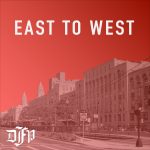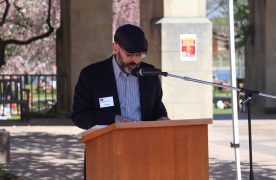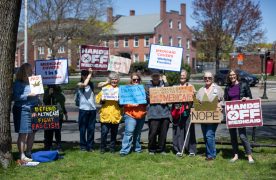 Allston-Brighton, past Packard’s Corner
Allston-Brighton, past Packard’s Corner
Apartments in Allston-Brighton are in a neighborhood filled with young people and are also in the heart of many students’ favorite partying scene. Students can live close to bars, restaurants, food stores and shops as well as vibrant clubs and performance centers. Allston-Brighton is much less expensive than most other popular off-campus housing neighborhoods. Utilities range between $40 and $80, but some are included in the cost of rent. Most students in Allston-Brighton make more use of the T, so that is something to consider since it is further from classes than places like South Campus. Students who live in this neighborhood said they enjoy being able to eat at different restaurants without considering whether they were getting their money’s worth out of their meal-plan, while others said having no dining hall nearby was an inconvenience. Some students also called Allston “dark, sketchy and dirty,” and said they struggled dealing with negligent landlords, yet said they still enjoyed the freedom of not having to follow BU residential guidelines and having the ability to have guests over and host parties.
 Commonwealth Avenue
Commonwealth Avenue
There are a variety of apartments scattered up and down Commonwealth Avenue, a perfect location for students who want the independence of living off-campus while still feeling connected to the BU community. Surrounded by food stores, restaurants, the partying scene and classes all at the same time, students find the area both fun and convenient. A downside of the area is that apartments along Commonwealth Ave. tend to be on the higher-end of off-campus apartments. Utilities prices range between $50 and $250 per month. Other expenses, such as groceries and transportation, range greatly. Some students spend as low as $300 per month cumulatively whereas others spend $700. Students living in these apartments said they appreciate the life experience of paying bills and dealing with landlords, while also saving a little bit of money compared to on-campus housing. They also enjoy the freedom that comes with not having to follow BU residential guidelines. Additionally, these apartments are more spacious than the on-campus housing in the same price range. However, students have said they do encounter problems such as negligent landlords, much like in the Allston-Brighton area. Many students also said they find budgeting for utilities, groceries and other expenses difficult because it is their first time budgeting these things in an expensive environment.
 Fenway
Fenway
Engrained in Red Sox spirit and built around an exciting nightlife, the Fenway neighborhood allows Boston University students to live in the heart of Boston while still being close enough to campus to attend class and be involved outside of the classroom. Like most off-campus residences, Fenway apartments include kitchens, giving students the opportunity to buy and cook their own food. Students enjoy living in the Fenway area for its cultural environment and spirited history. Lining the streets are restaurants, bars and places for entertainment, including the House of Blues, a movie theater and Fenway Park. The Fenway area also attracts musicians because of its proximity to Berklee College of Music and its variety of performance venues. Because some Fenway residences are further away from campus than most off-campus locations, students appreciate the opportunity to meet students from other schools, creating a sense of diversity that students said couldn’t be experienced in most other housing situations. Several students said the off-campus lifestyle can also be expensive, which is often difficult for students to handle. Weekly spending can range from $100 to $500 a week, depending on the student and their weekend plans. Students also said people who live in the Fenway area must be willing to spend more time walking to and from class before moving to the off-campus neighborhood.
 South Campus
South Campus
Sandwiched between the hustle and bustle of Commonwealth Avenue and the small-town Brookline community, Boston University students find South to be an off-campus option that lends students the opportunity to live in a quieter setting with the geographical closeness of campus. While its off-campus location gives students a break from the busy campus lifestyle, its proximity to public transportation is a significant advantage. Both the B and C branches of the Massachusetts Bay Transportation Authority green line are within walking distance of all South Campus housing. The availability of a kitchen in nearly every South Campus apartment is another factor that pulls students to the area, though many students joke that their cooking skills are only sub-par. Upperclassmen in South Campus also appreciate the separation from the younger social scene. While students can still go anywhere in the city for an exciting nightlife, their home base is peaceful and quiet. Some students said paying rent builds a sense of responsibility, but others said maintaining a reasonable budget can often be difficult when living in a South Campus apartment. On average, students spend about $100 a week on extraneous items. Students who enjoy downtown Boston also complain that the quiet South Campus neighborhood is too distant from the rest of the city. The BU Shuttle only travels to South Campus on the weekends, and many of the campus’ buildings, including the Fitness and Recreation Center, are closer to West Campus.
This is an account occasionally used by the Daily Free Press editors to post archived posts from previous iterations of the site or otherwise for special circumstance publications. See authorship info on the byline at the top of the page.













